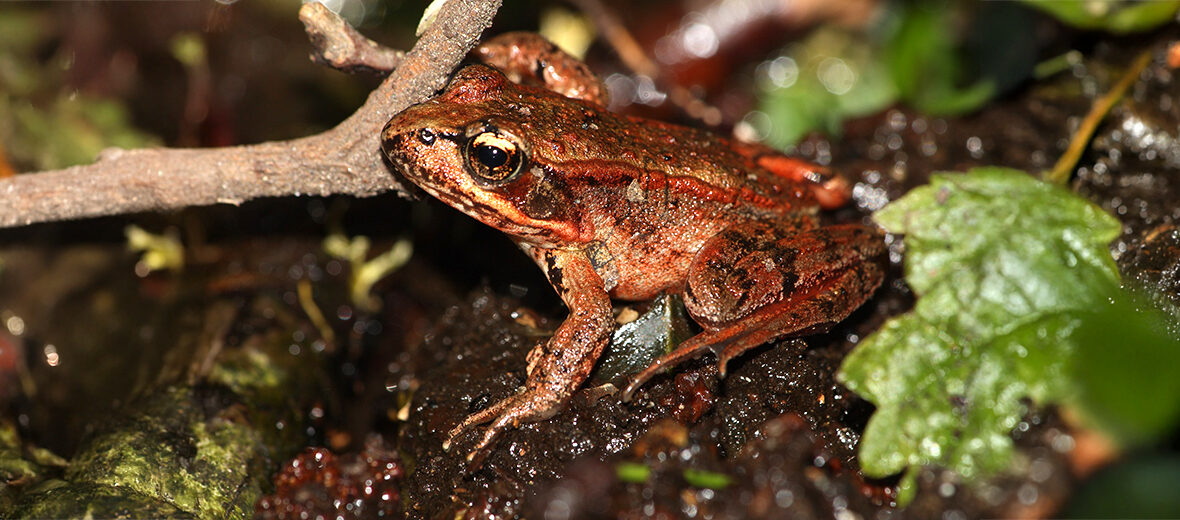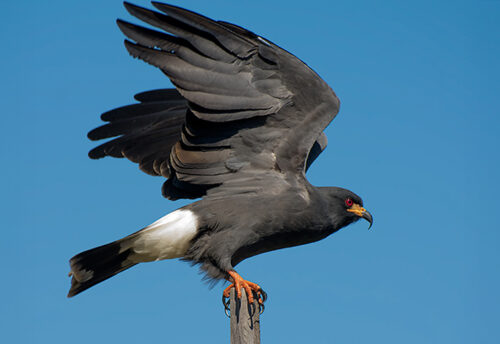
The northern red-legged frog is considered a true frog from the from the genus Rana. These frogs can be found in northern California, Oregon, Washington, Vancouver, and British Columbia. Even though they face the threats of habitat loss and destruction at the hands of residential and commercial developments, farming, ranching, and dams; habitat division at the hands of roads and railroads, which often results in vehicle strike – being hit by vehicles; invasive species, which can bring about predation and disease; and pollution, that fouls the soil and water, these frogs are still abundant enough to be listed as Least Concern by the IUCN. Their population trend is decreasing though.
First the Stats…
Scientific name: Rana aurora
Weight: Up to 3+ ounces
Length: Up to 4.2 inches
Lifespan: Up to 15 years
Now on to the Facts!
1.) An excess of road fatalities has led to innovative volunteer programs and wildlife undercrossing projects to protect urban frog populations in Portland, Oregon. An undercrossing can be either a bridge that goes over the road/railroad, or can be a tunnel that runs under the road/railroad where the animals can travel in safety from 1 place to another without fear of vehicle strike.
2.) There is another species classified as red-legged frog, that being the California red-legged frog.
3.) Such is the case in most all frog species, there is sexual dimorphism (males and females are notably different) in that females are typically larger than males.
4.) These frogs can be found at elevations from sea level to 4,680 feet.
5.) They prefer habitats with shallow ponds and wetlands that have dense emergent vegetation.
But wait, there’s more on the northern red-legged frog!
6.) A variety of terrestrial insects, small snails, crustaceans, worms, smaller frogs, small fish, and tadpoles are all on the menu.
7.) Tadpoles feast on algae.
Did you know…?
Male courtship vocalizations consist of underwater breeding choruses that are unique among ranid species, and mating calls during amplexus (amplexus is where the male will grip and hold onto the female’s back, where they’ll stay until breeding is complete).
8.) Females can lay upwards of 2,000 eggs in a single clutch!
9.) Eggs hatch up to 5 weeks after being fertilized.
10.) Tadpoles metamorphose once they reach up to 3 inches in length.
But wait, there’s still more on the northern red-legged frog!
11.) When danger pays a visit, these frogs typically flee to the safety of a nearby water source and can dive underwater to depths of up to 3.28 feet.
12.) Raccoons, coyotes, dogs, foxes, cats, bullfrogs, herons, bitterns, garter snakes, and trout all prey on either adults or tadpoles.
Did you know…?
Volunteers have placed temporary barriers to stop the frogs from crossing up to 5-lane highways, then collect and shuttle the frogs to the other side of the road to the safety of the wetlands. Hundreds of thousands of frogs are escorted this way each year.
13.) Like so many other frog species, they are nocturnal (active at night).
14.) Road fatalities are a conservation concern for these frogs. Each frogs’ annual breeding migration from upland forests to lowland wetlands can entail crossing busy roads.
15.) Excess vehicle-based fatalities has led to the formation of a truly unique volunteer program that is called the Harborton Frog Shuttle, in 2013.
Now a Short Northern Red-Legged Frog Video!
Be sure to share & comment below! Also, check out the Critter Science YouTube channel. Videos added regularly!
Want to suggest a critter for me to write about? Let me know here.
Some source material acquired from: Wikipedia & IUCN
Photo credit: Walter Siegmund




